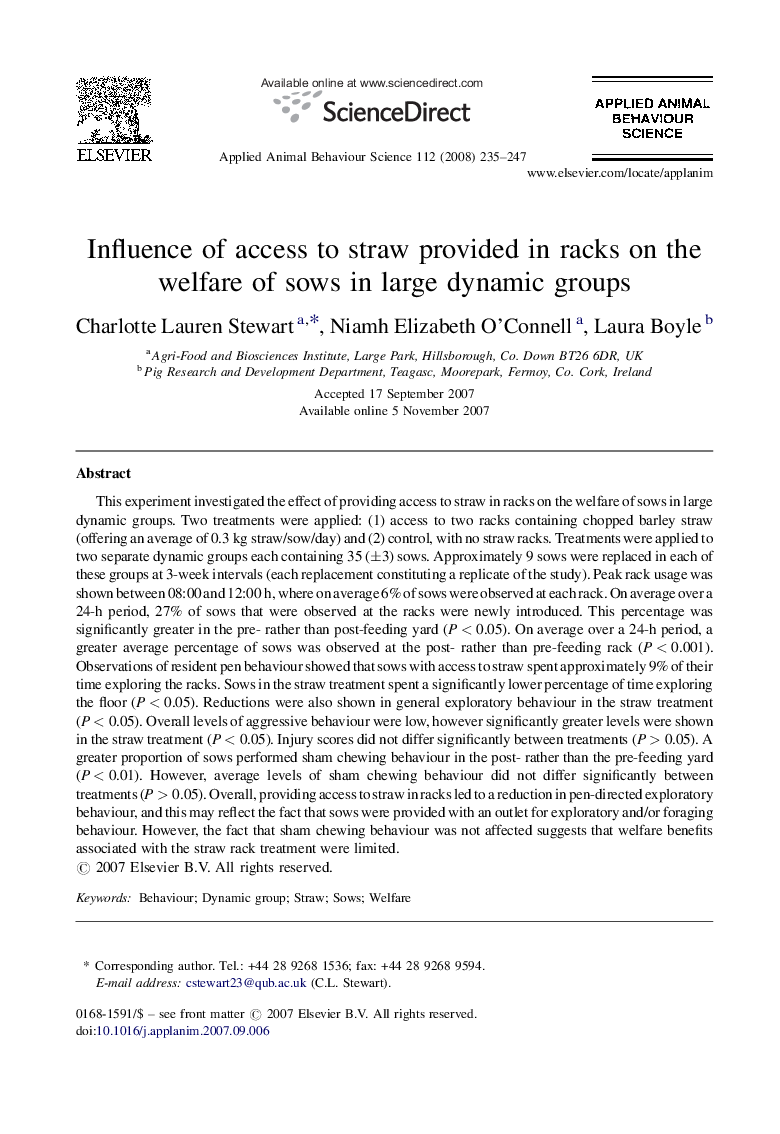| Article ID | Journal | Published Year | Pages | File Type |
|---|---|---|---|---|
| 4523968 | Applied Animal Behaviour Science | 2008 | 13 Pages |
This experiment investigated the effect of providing access to straw in racks on the welfare of sows in large dynamic groups. Two treatments were applied: (1) access to two racks containing chopped barley straw (offering an average of 0.3 kg straw/sow/day) and (2) control, with no straw racks. Treatments were applied to two separate dynamic groups each containing 35 (±3) sows. Approximately 9 sows were replaced in each of these groups at 3-week intervals (each replacement constituting a replicate of the study). Peak rack usage was shown between 08:00 and 12:00 h, where on average 6% of sows were observed at each rack. On average over a 24-h period, 27% of sows that were observed at the racks were newly introduced. This percentage was significantly greater in the pre- rather than post-feeding yard (P < 0.05). On average over a 24-h period, a greater average percentage of sows was observed at the post- rather than pre-feeding rack (P < 0.001). Observations of resident pen behaviour showed that sows with access to straw spent approximately 9% of their time exploring the racks. Sows in the straw treatment spent a significantly lower percentage of time exploring the floor (P < 0.05). Reductions were also shown in general exploratory behaviour in the straw treatment (P < 0.05). Overall levels of aggressive behaviour were low, however significantly greater levels were shown in the straw treatment (P < 0.05). Injury scores did not differ significantly between treatments (P > 0.05). A greater proportion of sows performed sham chewing behaviour in the post- rather than the pre-feeding yard (P < 0.01). However, average levels of sham chewing behaviour did not differ significantly between treatments (P > 0.05). Overall, providing access to straw in racks led to a reduction in pen-directed exploratory behaviour, and this may reflect the fact that sows were provided with an outlet for exploratory and/or foraging behaviour. However, the fact that sham chewing behaviour was not affected suggests that welfare benefits associated with the straw rack treatment were limited.
